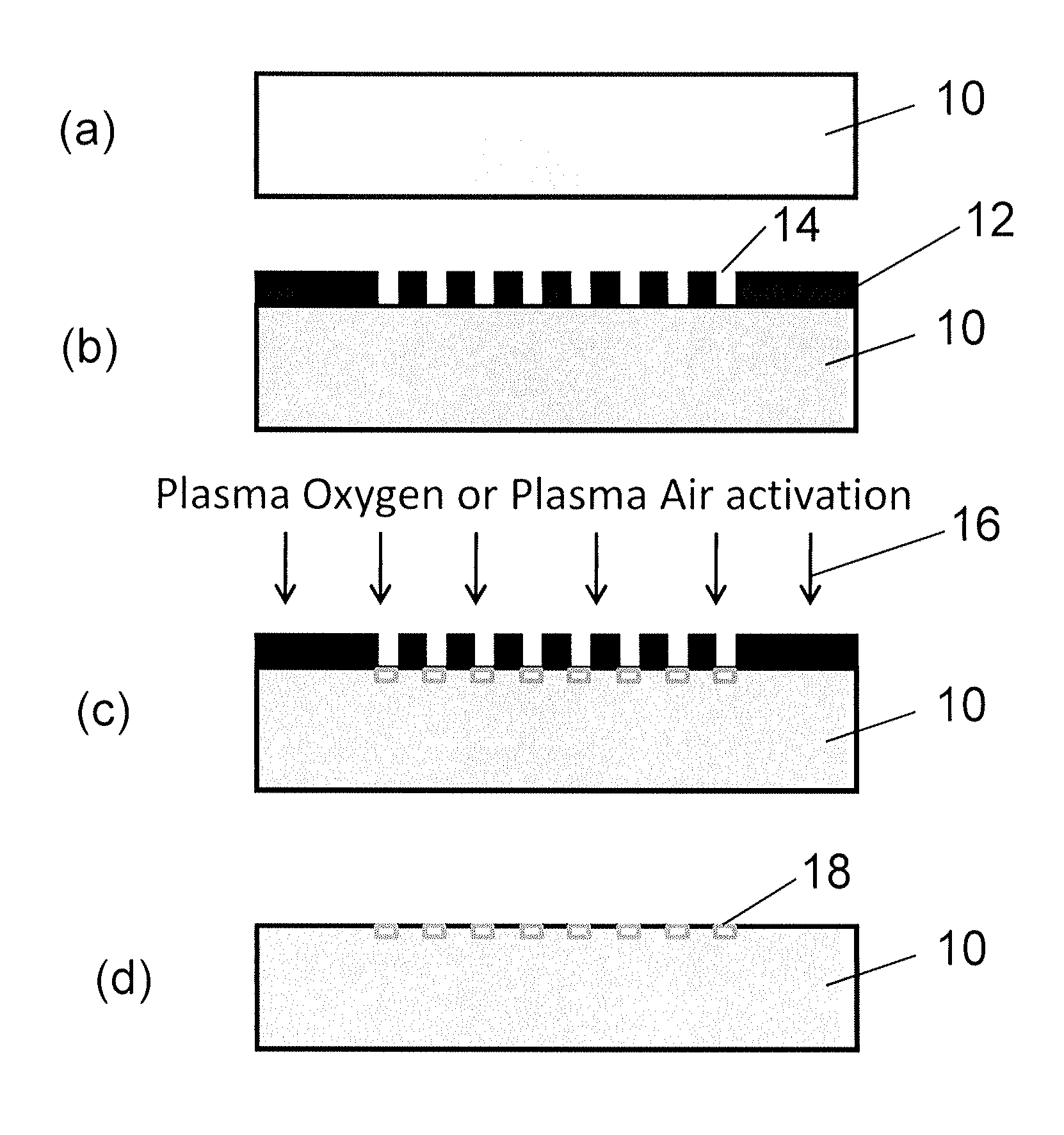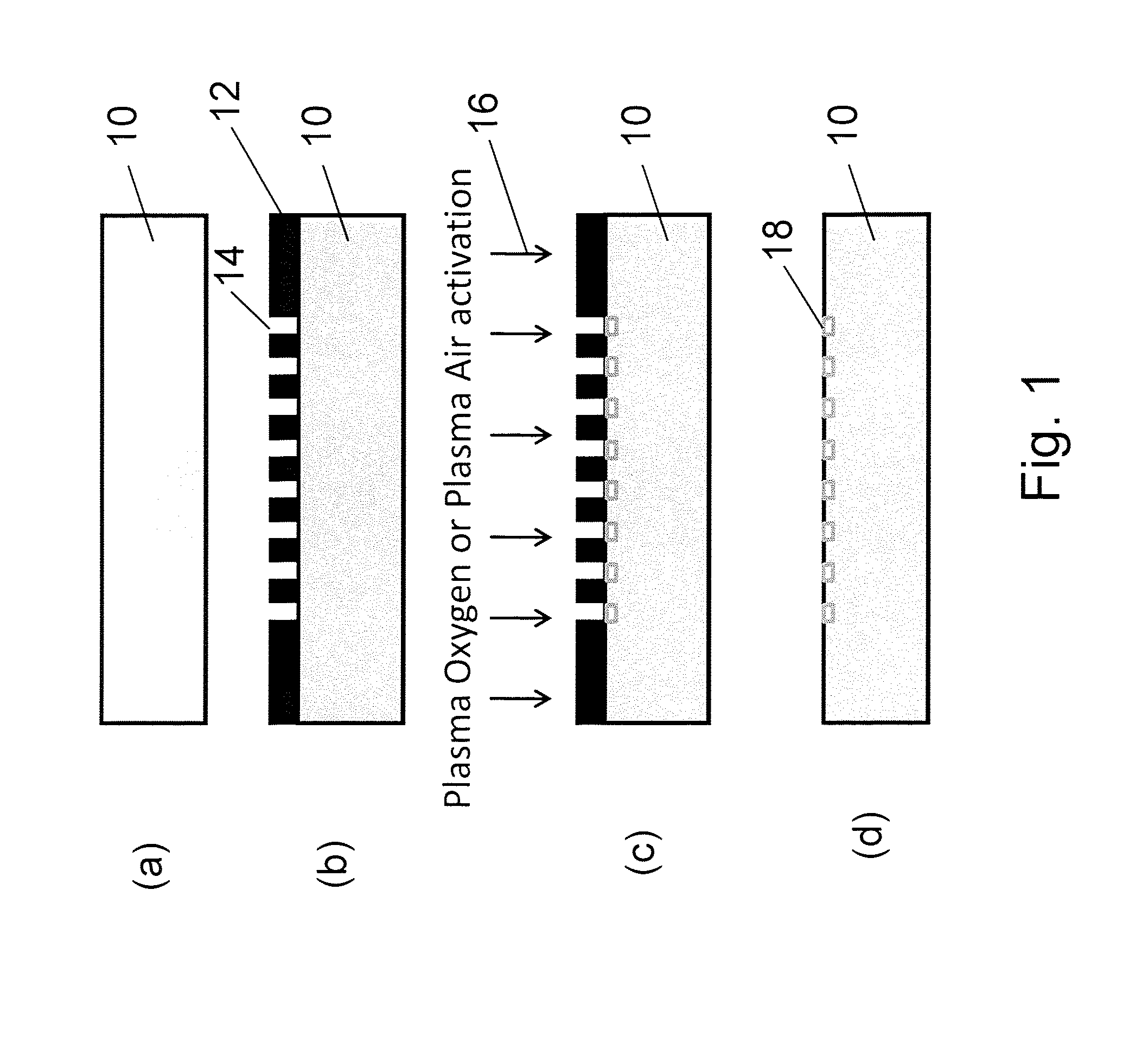Selective Plasma Activation for Medical Implants and Wound Healing Devices
a technology of selective plasma activation and medical implants, applied in the field of devices, can solve the problems of reduced biocompatibility of imds with the body, infection and capsular contraction remain significant clinical problems, and the biocompatibility of the implant is limited by the reduction of biocompatibility
- Summary
- Abstract
- Description
- Claims
- Application Information
AI Technical Summary
Benefits of technology
Problems solved by technology
Method used
Image
Examples
examples
[0118]The invention describes a surface with anti-fibrotic properties. Anti-fibrotic is defined as having characteristics reducing the presence and development of myofibroblasts, cells responsible for fibrotic tissue formation and contraction. The bio-physical properties of the surface are sufficient to allow fibroblasts to attach, but impair myofibroblasts development.
[0119]Myofibroblast development is defined by an in vitro assay in which fibroblasts are seeded on the surface and myofibroblast differentiation is induced with TGF-β1. Myofibroblasts are defined as cells positive for α-SMA.
[0120]To identify the ideal properties of the antifibrotic properties several surface activation patterns were tested by the above mentioned assay. On silicone, selective activation of specific islet size (length of 4 μm and width of 2 μm) and distribution with a regular distance between the islets of 5 μm reduced 4-fold the differentiation of human dermal fibroblasts to myofibroblasts compared to ...
PUM
| Property | Measurement | Unit |
|---|---|---|
| width | aaaaa | aaaaa |
| width | aaaaa | aaaaa |
| distance | aaaaa | aaaaa |
Abstract
Description
Claims
Application Information
 Login to View More
Login to View More - R&D
- Intellectual Property
- Life Sciences
- Materials
- Tech Scout
- Unparalleled Data Quality
- Higher Quality Content
- 60% Fewer Hallucinations
Browse by: Latest US Patents, China's latest patents, Technical Efficacy Thesaurus, Application Domain, Technology Topic, Popular Technical Reports.
© 2025 PatSnap. All rights reserved.Legal|Privacy policy|Modern Slavery Act Transparency Statement|Sitemap|About US| Contact US: help@patsnap.com



